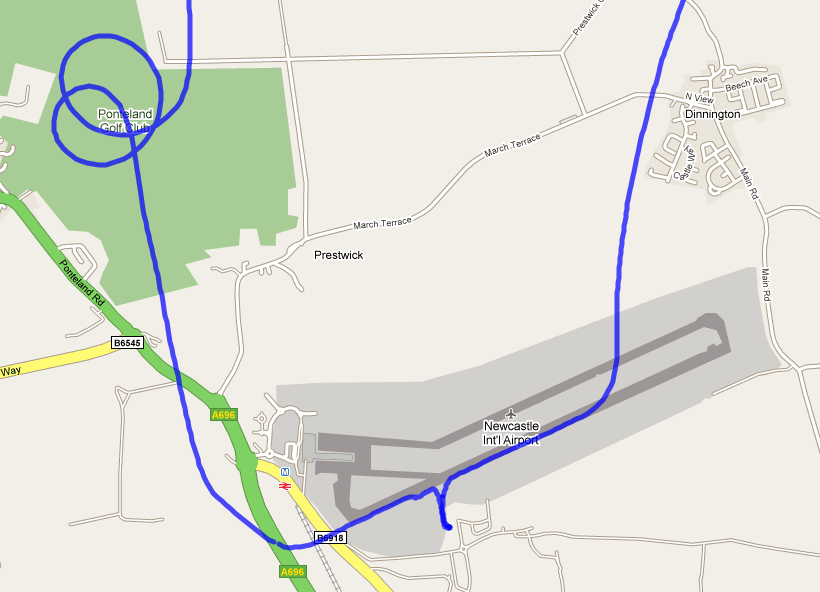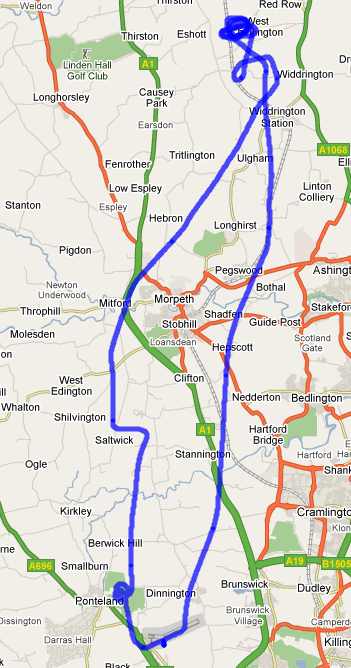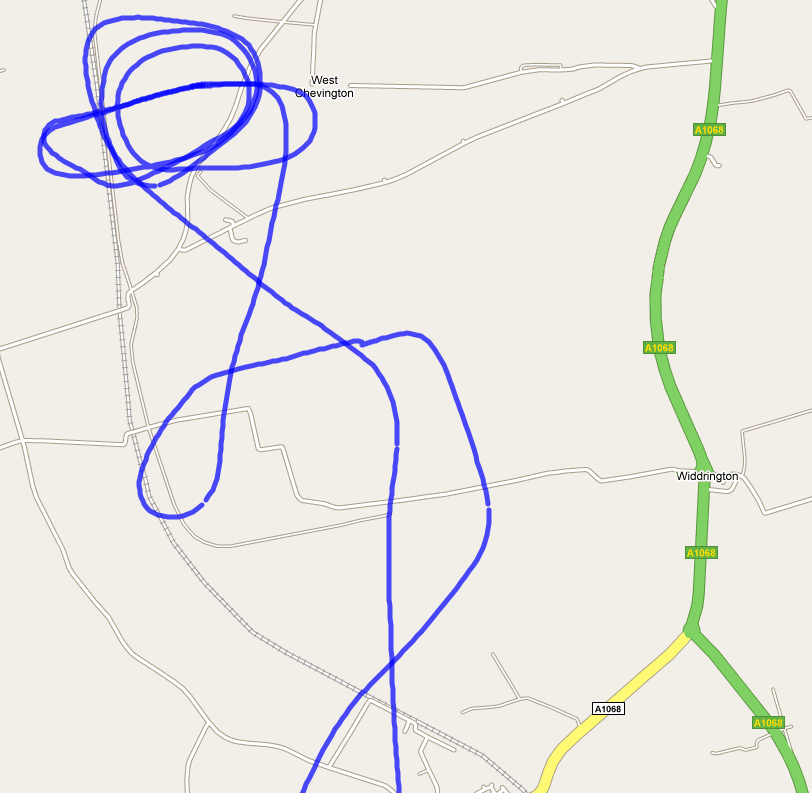Well, despite poor weather, we managed to get a lesson in, albeit a short one (40 minutes).
We concentrated on instrument flying, but managed some autos and a demo’ed auto with power termination in a field near Morpeth.
Order of the day….I booked out, and checked G-MAVI over. There was some confusion with our callsign. I’m sure I put Northumbria01 on the booking out sheet, but Tower queried our callsign, they were happy for us to assume the mantle Northumbria01 instead of ZERO TWO.
Steve came out for the last couple of checks and we were told to hold at Foxtrot. That was good, because I got chance to do a couple of landings/takeoffs as we waited for a plane to land and taxi off the active.
Once he’d gone, we were given the go. Once we’d climbed to about 1600 feet (we couldn’t have gone much higher because of the cloud base), Steve had me don the instrument goggles. Usual…
- hold a heading
- turn 90′ left
- turn 90′ right
- Descending 180′
They all went fine.
Steve then took control and adopted an unusual attitude in the plane and with the instrument goggles on, I had to get us level again. I got it eventually, but it took me 5 seconds to realise power was low. Once I’d sussed that, it was sorted.
Once the instrument flying was done, I was a bit disoriented. I had no idea where we were, what direction we were facing. And I’m pleased about this, because it made me think about where the wind was coming from and that normally I don’t have to do that. It shows me I’m developing a constant awareness of the wind direction without realising it at the time.
We did some autos to a powered recovery at about 500 feet. I needed reminding about the throttle. We did a couple of max range ones where we reduce rotor rpm to 90/95% whilst maintaining 75kts.
By this stage, my concentration was going, and I wasn’t benefitting from the practice, so I asked Steve if he’d demo an auto to 5 feet above the ground. We had a nice field with the only downside being some sheep in one corner, but they were totally unphased by us even after we’d climbed away. They were a few hundred yards away.
It was interesting to watch an auto being done all the way to a low hover. It allowed me to analyse and think it through, plus Steve through in a commentary. His commentaries, because they are the same language each time DO help learning a lot. It’s a set of instructions that gradually sink in, so that when I do it, I’m hearing Steve saying things like……
- Balance, check
- Rotor RPM, check
- Reduce Throttle, check
- Speed, check
- Cancel Carb Heat
- Not yet, not yet, not yet
- Flare
- Level
- POP (that’s his favourite)
- Cushion
He says these exact things everytime, and the fact I can write them down, tells me they are sinking in. Of course, doing them is another thing, but I’m getting there.
We’d been out 25 minutes and I wasn’t in the zone today, so Steve (rightly) suggested we head back. He’d spotted a fast low-level helicopter on the way back. We kept a visual with it until it was in front of us.
Tower :- Report at Stannington, join right-base for 25. QFE 1010.
We did that, and Steve said to use the approach to practice the approach sight picture. The sight picture is how an approach should look. I need to start doing this on every final to the runway, because, as Steve said, you don’t often get a mile long runway to practice your “sight picture”. Good tip.
The final landing was a pleasing one. I’ve decided not to fart on any more. Scott was right, get yourself ready for a landing and barring any sideways/backwards movement, commit to getting it down. I did it today, and it worked. It wasn’t 10/10, but it was 9/10. I was happy.
No lesson until friday, because of kp stuff. There may be an opportunity of a cheap cross country to Blackpool. All day job for a heli to have a service. So, I hope that comes off, as I did all my light aircraft flying from Blackpool, so that will be a trip down memory lane. PLUS Steve said we may get the chance to look around the Oil Rig helicopters there. Fingers crossed for that one.



